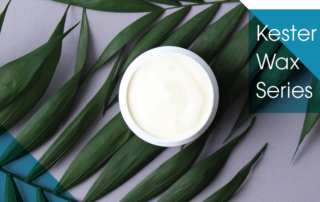Kester Wax
Kester Wax Explained
Ester chemistry used in personal care and cosmetics can range from oils to waxy solids depending on their molecular weight. The differences in composition will affect the product form, its properties, and its behavior in finished formulas.
Each of Koster Keunen’s Kester Waxes are created for different performances in finished products.
Request A Sample
To request a wax sample please click HERE.
Request Information
To obtain further details on this program, use information in your marketing story, or ask other questions, email us HERE.
FORMULATION GUIDELINES
Each Kester Wax follow the same basic guidelines. Melt into oil phase. Best practices for working with wax chemistries is to melt 5-10 degrees over melt point.
CLEAN BEAUTY
Approved for use* with leading brands including but not limited to: Clean at Sephora, Credo Beauty and Whole Foods Premium Body Care.
* at the time of print
Products
Wax esters allow specific characteristics of a formula to be designed. They are advanced tools for the chemist to shape distinct features.
Formulas
Example formulas showcasing each of the Kester Wax products listed.
Kester Wax K-24
Wax No. 6358B
A non-traditional wax ester, Kester Wax K-24 is a solid at room temperature with performances comparable to a liquid ester in formulations. This product will not structure systems. Kester K-24 is highly compatible in all systems, similar to most cosmetic oils and liquid esters.
Solid to Liquid in a Blink
Kester Wax K-24 has a fast phase change allowing this ester to transition from solid to liquid instantly. The chemistry lends an initial cooling effect in some emulsion formulas, and provides that “instant slip” in formulation provided by the low melt point (25°C).
Applications
Highly versatile ester wax that can be used in all applications including Skin Care, Hair Care, Color Cosmetics, Sunscreens, AP/DEO, Wash-off or Leave-on products. Acceptable for natural, clean beauty and vegan formulas.
| SKIN CARE | HAIR CARE | COLOR COSMETICS |
|---|---|---|
|
|
|
| FEATURES AND BENEFITS | ||
|
CLEAN BEAUTY
|
PRODUCT CHARACTERISTICS
|
Wax No. 6120P
A non-traditional wax ester, […]







